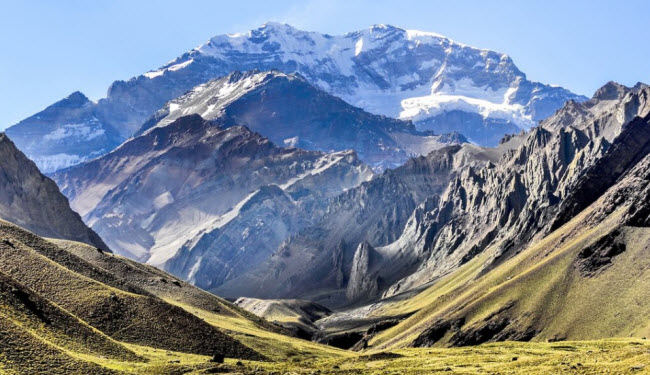The Andes Mountains, the longest mountain range in South America, stretch along the western coast of the continent for over 7,000 kilometers. The range spans across seven countries: Argentina, Bolivia, Chile, Colombia, Ecuador, Peru, and Venezuela. With an average width of 300 kilometers, except for the Bolivian orocline where it extends to 640 kilometers, the Andes maintain an average elevation of around 4,000 meters. Notably, the Andes are the highest mountain range outside of Asia, with Aconcagua, located in Argentina, as its tallest peak. In contrast, Ecuador’s Mount Chimborazo holds the distinction of being the farthest point from the Earth’s center, due to its location on the planet’s equatorial bulge.
The origin of the Andes’ name is still debated. One theory suggests it derives from the Quechua language, where it refers to “high peak.” Another explanation links it to the Spanish word “Andén,” meaning “terrace,” a nod to the agricultural terraces used by the Inca and other ancient civilizations that once flourished in the region.
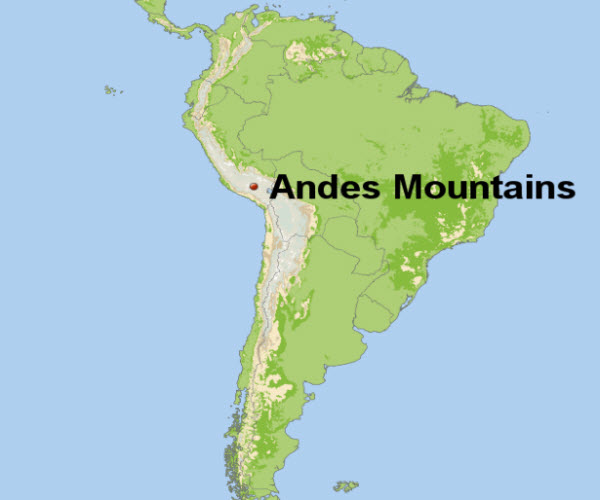
Geography of the Andes
The Andes can be divided into three sections: the Southern Andes, which span Argentina and Chile; the Central Andes, found in Chile and Peru; and the Northern Andes, which encompass Venezuela, Colombia, and northern Ecuador. This range is characterized by two parallel chains, the Cordillera Occidental and Cordillera Oriental, often separated by deep valleys. Additionally, smaller mountain ranges arise from these main chains.
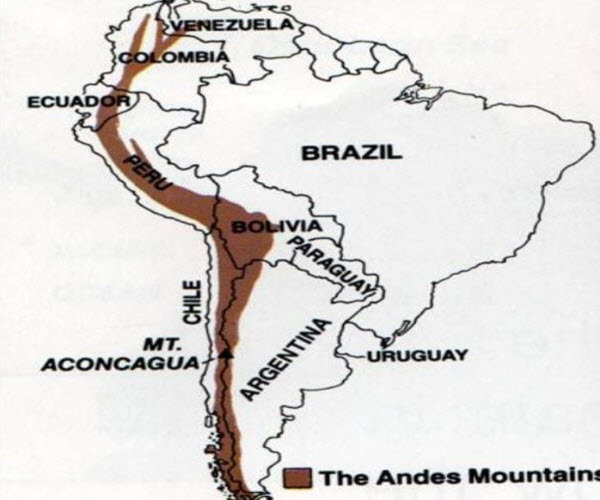
Along the western edge of the range, the Cordillera de la Costa starts at the southern tip of the continent, running north parallel to the coast and eventually forming isolated hills along the Pacific Ocean all the way to Venezuela. Interestingly, the submerged peaks of the northern Andes extend into the Caribbean Sea, forming the islands of Aruba, Bonaire, and Curaçao.
Geology and Formation
The Andes were formed primarily due to tectonic activity, specifically the subduction of the Nazca Plate beneath the South American Plate. This process, marked by the Peru-Chile Trench along the Pacific coast, has caused numerous earthquakes in the region. The initial formation of the Andes began during the Jurassic period, but they took on their current form in the Cretaceous period. The ongoing tectonic activity continues to shape the landscape, leading to frequent seismic events and volcanic eruptions along the entire western coastline of South America.
Climate and Biodiversity
The climate of the Andes varies significantly depending on location, altitude, and proximity to the ocean. The southern section is characterized by a cold and rainy climate, while the central Andes are generally dry with significant temperature fluctuations. The northern Andes tend to be warmer and more humid, although there are also stark contrasts within short distances, such as the presence of tropical rainforests just a few kilometers from snow-capped peaks like Cotopaxi.
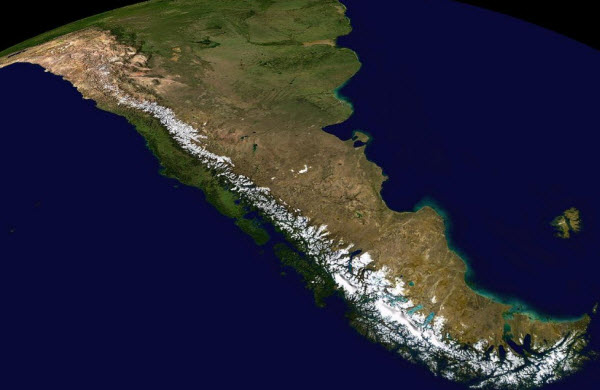
The northern Andes are surrounded by lush rainforests, home to the cinchona tree, from which quinine—a treatment for malaria—is derived. In the high-altitude regions of Ecuador, Peru, and Bolivia, forests of Polylepis trees can be found as high as 4,500 meters above sea level. The region is also famous for its fauna, particularly llamas, which thrive in the highlands of Peru and Bolivia. Alpacas, closely related to llamas, are raised for their valuable wool. The majestic Andean condor, one of the largest flying birds in the world, also inhabits the region.
Historical Significance
The Andes have been home to numerous civilizations, most notably the Inca Empire, which rose to prominence in the 14th century. The Incas developed an extensive road and irrigation network that helped sustain a thriving agricultural and trade economy. However, the empire fell to Spanish invaders led by Francisco Pizarro in 1532, after the introduction of European diseases devastated the indigenous population. Despite the fall of the empire, the city of Machu Picchu, perched high in the mountains, remained hidden from the Spanish and is today a symbol of the Inca’s architectural and cultural achievements.
Agriculture and Industry
For over 6,000 years, Andean civilizations practiced terrace farming, a method that allowed them to cultivate crops on the region’s steep mountain slopes. Corn and barley were staple crops, and today tobacco, cotton, and coffee have been added to the region’s agricultural exports. Potatoes, a staple food for Andean peoples, continue to be an essential crop, and both cacao and coca plants have deep cultural and historical importance. Coca leaves, often chewed or brewed into tea in the Andes, have a stimulating effect similar to strong coffee. However, the plant is more widely known as the source of cocaine, which is chemically extracted from its leaves.
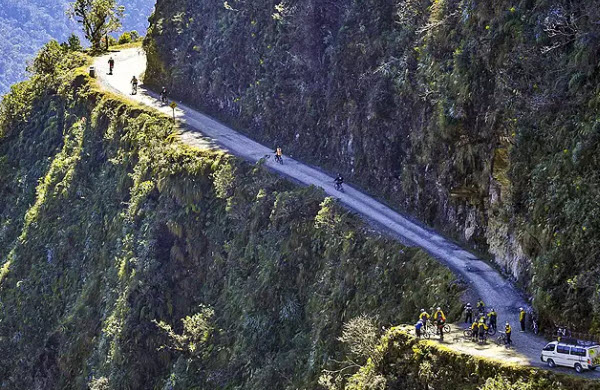
Mining is another vital industry in the Andes, which is one of the world’s most important sources of minerals. Key minerals extracted from the region include iron, gold, silver, and copper.
Modern-Day Andes
In modern times, the Andes remain relatively isolated from urban centers due to the rugged terrain. Most transportation within the mountains is done on foot, with llamas still being a primary means of transporting goods. The main languages spoken in the Andes today are Quechua and Aymara, which have survived through centuries of cultural change and continue to be used by indigenous populations.
